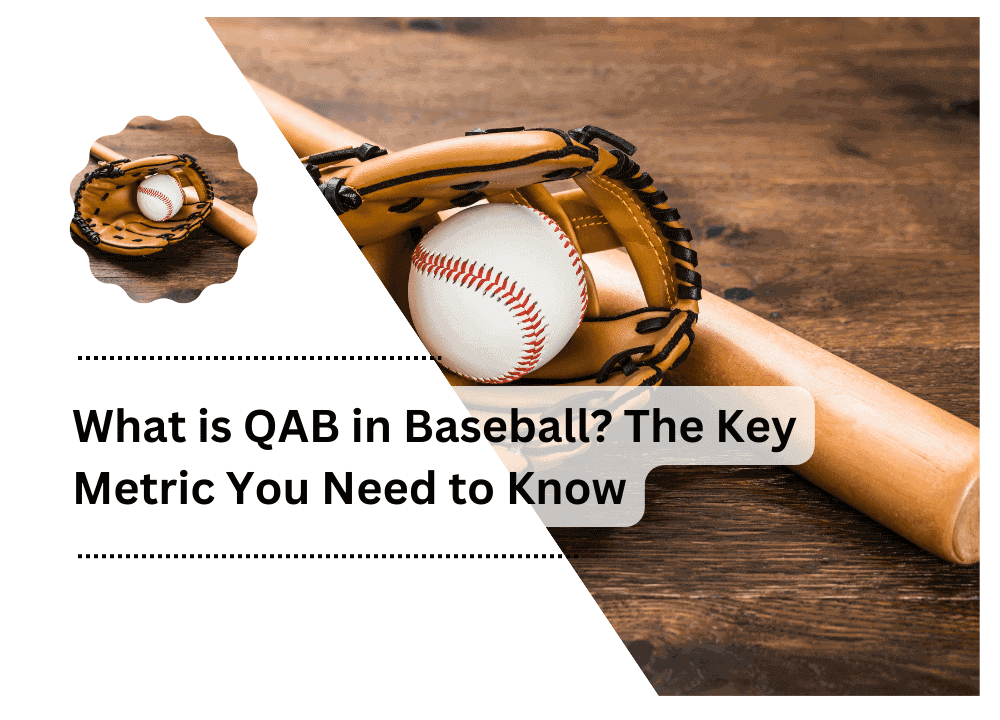
A hitter’s overall performance can be gauged by a number of statistical measures, and QAB is one of them. But what is QAB in baseball, and why is it important? Let’s find out.
QAB means ‘Quality at Bat,’ which is any plate appearance that leads to a positive outcome for the hitting team. A plate appearance refers to one turn of the batter at the plate. The player may or may not reach the base; QAB does not imply a complete base.
It is the single most important value of any team’s offense lineup. A good QAB average, especially in MLB, means a team’s hitters are able to not only hold the pitch without striking out but also have consistent scoring, plate appearance, and hitting averages.
Different Types Of QAB
There can be many different types of QAB and various positive outcomes from them. We will discuss those in detail and help you understand each case in simpler terms. So here are the types of QAB:
- The pitcher throws six consecutive pitches without a strikeout. This can be due to the hitter smashing home runs or simple shots, but for six pitches, the hitter must survive without a strikeout, flyout (ball is caught after hit in the air), or ground out (ball is thrown to first base before hitter reaches it). If, after six pitches, the player hits even a flyout, it is still considered a QAB, which is an advantage for the team.
- The pitcher throws nine or more pitches in one plate appearance; this is a huge plus in terms of surviving the pitch by the hitter, as nine consecutive pitches in one appearance is definitely not an easy job, at least not for beginners like me. After nine pitches, even if the batter is struck out and hits a flyout or a groundout, it still counts as a QAB.
- The hitter gets hit by the ball, and this could be accidental or intentional. Either way, the play is considered dead, and the batter is awarded a free walk to the first base. This definitely counts as a QAB.
- The ball is hit hard, simple as that, just a solid high-velocity contact with the center of the ball whether it scores or not.
Calculating The QAB Percentage
Very often, a player may not have as high a batting average as the rest of the offensive lineup, but their QAB percentage is so high they are kept high on the lineup regardless. This is because a good QAB percentage means the batter has more quality at-bat for the number of plate appearances they have.
As long as a hitter is standing on the plate, it counts as one plate appearance. However, they could have a big number of QAB in just that one appearance by any of the ways listed above and many more. Calculating QAB percentage is simple: the number of QABs is divided by the number of plate appearances by the hitter.
If high, it shows the hitter is capable of sustaining the play long enough for the team to have a strongly positive outcome; not only that, a hitter who doesn’t move from the plate for a consistent number of pitches instills frustration in the pitcher and the opposite team, which can lead to more HBPs thus more QABs granted to the hitter.
If a player has a high QAB percentage as well as batting average, it is safe to say they are destined to make it into the MLB Hall of Fame. Speaking of MLB, a good QAB percentage is considered 50-60% or above, while college and high school teams consider 40 or above a good percentage, too.
Conclusion for What is QAB in Baseball? The Key Metric You Need to Know
As confusing as these terms can be for a first-timer entering into the glamourous world of baseball, they are quite important to learn. We hope this article helped our enthusiastic readers understand the basic meaning and importance of QAB and how it affects a team’s overall standing in the MLB.
So, next time you are choosing a team for your fantasy baseball lineup, make sure to check out their hitters’ QAB percentage first and then the batting average. Remember, baseball is a complex and beautiful game; whether you are playing it or watching it, these intrinsic statistical aspects of it are what make it one of the most profoundly elaborate games in the world.
FAQs for What is QAB in Baseball?
Actions that contribute to a Quality At-Bat include seeing multiple pitches, drawing a walk, hitting the ball hard, driving in a run, executing a sacrifice fly, moving a runner over, or reaching base through an error or hit by pitch.
There’s no universally agreed-upon standard definition of a Quality At-Bat. Different teams, coaches, or analysts may have slightly different criteria for what constitutes a QAB based on their specific approach or interpretation.
Yes, determining a Quality At-Bat can be subjective to some extent, as different individuals or organizations may have varying criteria or interpretations of what constitutes a productive at-bat. However, efforts are made to establish standardized criteria within a team or league for consistency.
Launch Angel in baseball is another measure used to evaluate the quality of a batter’s performance. Batter’s who know which angles to play have a higher hit score.
